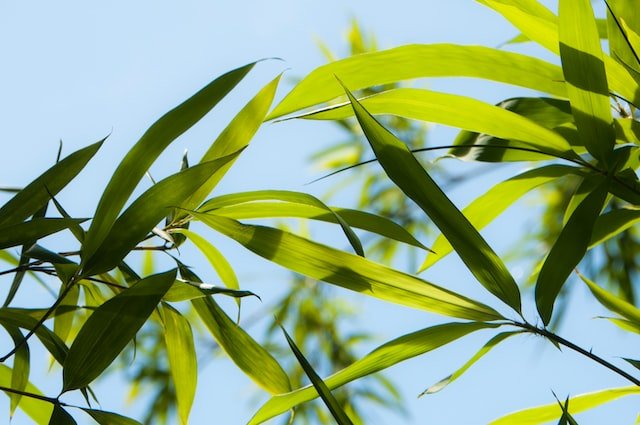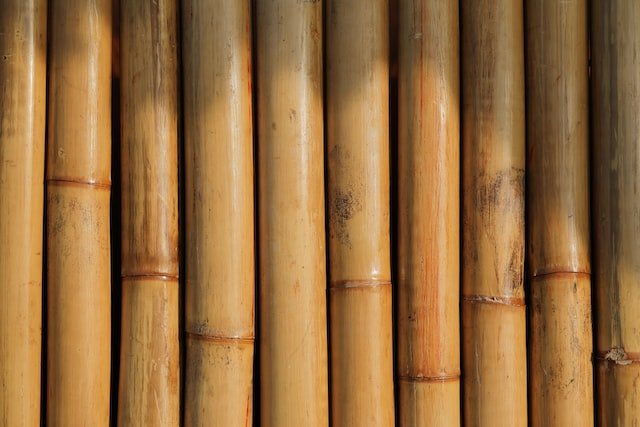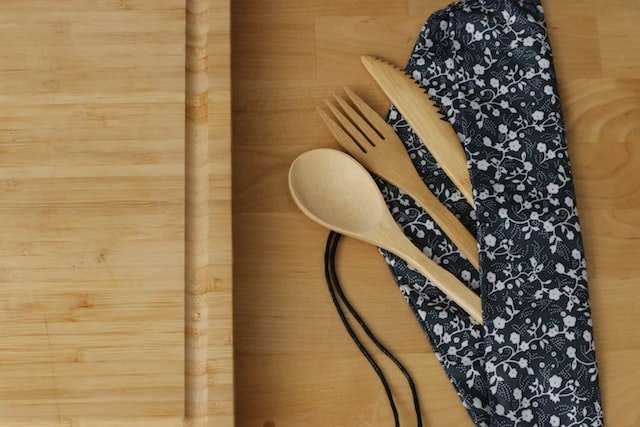Is Bamboo A Renewable Resource?
0Shares
Bamboo is a type of grass that is known for its incredible versatility and strength. It has been used for centuries for a variety of purposes, including building materials, food, and clothing. In recent years, bamboo has gained popularity as an eco-friendly alternative to traditional materials due to its sustainability and renewability. In this article, we will explore the question of whether bamboo is truly a renewable resource.
What Is A Renewable Resource?

We must define the meaning of “renewable resources” to determine whether bamboo is one of them. Water, sunshine, wind, and biomass are renewable resources. This means that renewable resources may be utilized endlessly without depleting them or harming the environment.
Bamboo is considered a sustainable resource since it grows swiftly and regenerates without replanting. Bamboo is one of the fastest-growing plants on Earth, growing one meter every day. It grows sustainably and ecologically with minimal water, fertilizer, or pesticides.
Bamboo’s vast root system may develop new shoots without replanting after harvesting. Bamboo may be harvested endlessly without damaging the environment or diminishing its regeneration.
Bamboo As A Renewable Resource
 Photo by Maksim Shutov on Unsplash
Photo by Maksim Shutov on Unsplash
This plant is lauded as a renewable resource owing to the unique qualities that make it a sustainable crop. Bamboo grows fast, and some varieties may grow 91 cm (3 ft) each day. It grows faster than hardwoods, which might take decades compared to bamboo.
Next, bamboo can survive in many situations. Bamboo grows without pesticides or fertilizers, making it low-maintenance and ecologically beneficial. Bamboo is great for reforestation and erosion management since it grows on soil unsuitable for other crops.
Finally, bamboo is a self-regenerating resource. When bamboo is harvested, it sends out new shoots from its root system, which can grow into mature plants in just a few years. This means that bamboo can be harvested repeatedly from the same plants without harming the overall population. This is in contrast to other resources like traditional hardwoods, which can only be harvested once before the tree is cut down, leading to deforestation and habitat loss.
Overall, the combination of bamboo’s rapid growth, adaptability, and self-regeneration makes it a highly renewable resource that can be sustainably harvested for a variety of different purposes, from construction materials to textiles and even food. As such, bamboo is increasingly being recognized as a key component of a sustainable future, as we strive to reduce our dependence on non-renewable resources and promote more eco-friendly practices.
Environmental Impact Of Bamboo
Bamboo is adaptable, fast-growing, and environmentally sustainable. It is one of the fastest-growing plants and may grow several feet each day, making it renewable. It’s indeed perfect for eco-friendly farming.
🟩 Absorbs carbon dioxide
Besides being renewable, bamboo has numerous other advantages that make it an environmentally friendly crop. One of the most significant benefits of bamboo is its ability to absorb more carbon dioxide and produce more oxygen than traditional hardwood trees. This means that bamboo plays a critical role in reducing greenhouse gases and promoting cleaner air quality.
🟩 Preserves ecosystem
Harvesting bamboo has a little environmental effect. Conventional logging operations deforest, erode, and destroy animal habitats. Bamboo may be gathered without clear-cutting the forest, conserving the environment and wildlife. In poor soil locations, bamboo prevents soil deterioration and erosion.
🟩 Less carbon footprint
Another significant advantage of bamboo is that it can be harvested without the use of heavy machinery, which reduces the carbon footprint of the harvesting process. This is because bamboo is typically harvested by hand, which requires less energy and emits fewer pollutants than other methods used to harvest timber.
🟩 Versatile
Bamboo is also used in buildings, furniture, and textiles. Bamboo flooring, decking, and furniture may replace hardwoods. The fibers of bamboo also make soft clothes, towels, and bed linens.
Uses Of Bamboo

Bamboo is used in buildings, clothing, and food. It can be produced and harvested quickly, making it an eco-friendly solution for many uses. Other common bamboo uses are:
🟦 Building Materials
Homes, bridges, and furnishings can be made out of bamboo. Bamboo is robust and lightweight, making it a good building material. It can bend and flex without breaking, making it excellent for earthquake-prone locations. Bamboo grows rapidly and can be collected without harming the environment, making it a sustainable construction material.
🟦 Textiles
Bamboo fibers produce garments, towels, and beds. Bamboo materials are soft, breathable, and moisture-wicking. They are hypoallergenic and naturally antibacterial, making them ideal for delicate skin.
🟦 Food
Asian cuisine now uses bamboo shoots for various dishes. The first few months of development produce tender, delicious bamboo shoots. They contribute nutrition and fiber to many meals. Bamboo shoots may be collected without hurting the plant, making them sustainable food.
🟦 Paper
Bamboo pulp makes tissue and toilet paper. It can replace wood pulp since it grows quicker and uses less water and chemicals. Bamboo paper is softer and more absorbent than regular paper, making it a popular alternative.
Bamboo has numerous uses. It can build flutes, guitars, spoons, and cutting boards. It can also be used as flooring, fences, and bicycles.
Bamboo is a very adaptable material. Its softness, comfort, and health advantages make it a consumer and industry favorite. Bamboo’s popularity will undoubtedly rise as more people discover its various applications and advantages.
How Can You Contribute In The Propagation Of Bamboo
🟨 Educate others about the benefits of bamboo
Bamboo is multifunctional and sustainable. Fast-growing, it may be harvested faster than other hardwoods. It attracts sustainable enterprises and conserves resources. Bamboo grows with less water and pesticides, saving resources and pollutants.
Bamboo is collected without hurting the plant. It is grass, thus, unlike hardwoods, it doesn’t have a central trunk or root system to remove. Instead, just trim the mature bamboo stems and let the younger ones grow.
Bamboo is versatile in many sectors. Scaffolding and flooring made of bamboo are robust and lightweight. Its strength and flexibility make it a popular material for furniture, including tables, chairs, bed frames, and bookshelves.
Bamboo fibers are utilized in clothes, bedding, and towels. Soft, resilient, and moisture-wicking, these fibers are ideal for eco-friendly clothes. The bamboo pulp may be used to make high-quality notebooks, journals, and packaging.
Traditional medicine and food have employed bamboo for ages. In traditional Chinese medicine, bamboo shoots improve digestion and immunity. Bamboo shoots are a nutritious and fiber-rich component in many Asian recipes.
More people may be persuaded to grow and utilize bamboo by raising awareness of its sustainability. This may minimize non-renewable resource use and encourage a greener lifestyle.
🟨 Plant bamboo
There are methods to grow bamboo even without the right area or conditions. Work with local conservation organizations to find damaged or deforested regions that might benefit from bamboo’s erosion control and soil stabilization.
Bamboo is lovely and elegant, adding elegance and tranquility to any garden or yard. Gardeners and landscapers love its tall, thin stalks and delicate leaves, which create a pleasant ambiance.
If you have the room and conditions, growing bamboo in your yard or garden may improve your outdoor area and help the environment and community.
🟨 Purchase bamboo products
Due to its quick growth and little environmental effect, bamboo has become a popular eco-friendly material. Bamboo products benefit the bamboo sector and promote sustainability.
Bamboo flooring is a popular and durable alternative for homes and businesses. This resists water, insects, and decay. If properly maintained, it may endure decades and reduces demand for hardwood and carpets.
Bamboo clothing is another sustainable, comfy, and fashionable option. Bamboo fabric is soft, breathable, and moisture-wicking, perfect for activewear. For delicate skin, bamboo clothing is hypoallergenic and antimicrobial. Bamboo apparel is eco-friendly and supports sustainable fashion.
Bamboo utensils are also eco-friendly. Cooking utensils made from bamboo are lightweight, resilient, and naturally antibacterial. Biodegradable bamboo utensils do not add to plastic trash. Bamboo utensils decrease waste and benefit the environment.
🟨 Share your knowledge
If you have any experience growing bamboo, you might consider passing on your knowledge and skills to others who are interested in growing bamboo. You may give guidance and recommendations on the preparation of the soil, planting, care, and harvesting, as well as assistance in resolving frequent problems that happen during bamboo cultivation.
🟨 Support bamboo conservation efforts
Some species of bamboo are at risk of extinction as a result of the destruction of their natural habitats, excessive harvesting, and the effects of climate change. Contributing to conservation activities, such as preserving bamboo forests, rehabilitating damaged habitats, and encouraging sustainable harvesting techniques, is one way to assist in the preservation of these plants and the ecosystems in which they live.
🟨 Participate in bamboo-related events
In order to increase awareness and encourage the cultivation of bamboo, you may either attend or arrange activities relating to bamboo, such as seminars, conferences, or community planting days. These events may provide an opportunity to meet other people who have a passion for bamboo, acquire new skills and methods, and develop networks for future collaborations.
Bonus: Taking Care Of A Bamboo Plant
Bamboo is a widespread and adaptable plant that is well-known for its attractiveness as well as its strength. You can use it as a decoration either inside or outdoors, in landscaping projects, as a screen for personal privacy, to prevent erosion, and more. The maintenance of a bamboo plant is not very difficult. Nonetheless, there are a few things that you need to remember to maintain the plant’s continued good health and life. In this piece, we will go over some of the most important considerations to keep in mind while tending to your bamboo plant.
🟫 Watering
The watering of a bamboo plant is one of the most critical maintenance tasks you must perform. It is important to water bamboo plants on a regular basis, particularly during the warmer months. It is necessary to maintain a wet soil environment surrounding the bamboo plant, but the soil should not become soggy. The plant may perish if it receives an excessive amount of water since this might cause root rot and other fungal infections.
🟫 Soil
To grow healthy bamboo, choose the right soil. Your soil should drain rapidly because bamboo plants need damp but not soggy soil to avoid root rot.
Fertile soil is well-draining and it includes nutrients and minerals for bamboo growth. Bamboo plants need a slightly acidic soil with a pH of 6.0–6.5. Nutrient availability depends on soil pH, and alkaline soil may deprive plants of nutrients, making them weak and stunted.
Compost or organic materials may boost soil fertility. Compost contains nutrients and minerals that increase soil quality. Organic matter promotes soil texture and moisture retention, helping roots develop easier.
🟫 Sunlight
Bamboo needs sunshine to flourish. Sunlight is needed for photosynthesis and growth. Hence, enough sunshine is essential for plant health.
Bamboo plants need six hours of direct light daily. They should be put in an area that gets direct sunlight for most of the day. The quantity of sunshine needed depends on the bamboo plant’s kind.
Place an indoor bamboo plant near a sunny window. Make sure drapes, blinds, and other things don’t obscure the window’s sunlight. This lets the plant absorb maximum light.
Although the plant needs sunshine, it also needs protection from direct sunlight. Direct sunlight may harm plant leaves, especially since young bamboo plants are extremely vulnerable. Shade the plant during the warmest part of the day or move it away from the window. A translucent curtain may screen sunlight and protect the plant.
🟫 Fertilization
Like other plants, bamboo needs nutrients to thrive. Nitrogen helps bamboo plants produce chlorophyll, the green pigment needed for photosynthesis. Potassium strengthens plants while phosphorus builds strong roots and stems.
Fertilize your bamboo plant periodically to protect its health. Most bamboo plants need a nitrogen-phosphorus-potassium fertilizer. This fertilizer contains a variety of nutrients to help your plant thrive.
Fertilizing bamboo requires attention to time and regularity. Fertilize your bamboo plant every six months throughout the growing season, but not in winter when it’s dormant. Over-fertilizing a plant might burn its leaves.
Follow fertilizer package directions before applying. Apply the necessary quantity of fertilizer away from the plant’s base. Lastly, water the fertilizer around the plant’s base.
🟫 Pruning
Pruning is essential for bamboo plant health and aesthetics. Bamboo grows quickly and may get overgrown, reducing sunlight and airflow and causing mildew, fungus, and other ailments. Pruning removes dead or yellowing leaves that attract pests and illnesses.
Pruning also encourages new growth, which boosts plant health. By pruning older, weaker components, the plant may focus more energy on new development, producing thicker, stronger stems and leaves.
Pruning helps manage plant size and form. Bamboo rapidly grows tall and wiry, making it hard to fit into compact areas or keep tidy. Pruning controls plant height, spread, and shape. Bamboo in pots may become root-bound and require pruning to stay small.
Lastly, prune during the winter dormant season. Pruning is less stressful when the plant is less active. Pruning during the growing season might force the plant to focus on healing rather than development, which can hinder growth.
🟫 Pests and diseases
Bamboo is strong, resilient, and versatile. Yet, many pests and diseases may destroy the plant if left unchecked. Aphids, spider mites, and mealybugs are frequent bamboo pests. These insects feed on plant sap, causing wilting, yellowing, and deformed growth.
Fungal diseases and pests threaten bamboo plants. Air circulation, humidity, and overwatering may cause these conditions. Leaf spots, root rot, and powdery mildew are typical signs of bamboo fungal infections. These diseases may discolor, wilt, and kill plants.
Bamboo plants may be protected against pests and illnesses. Maintaining a clean facility is important. Avoid overwatering and remove dead or unhealthy vegetation. Pruning and thinning promote airflow and minimize fungal disease risk.
There are numerous pest and disease management methods. Aphids, spider mites, and other pests may be killed using insecticidal soap or neem oil. These products suffocate or disturb insects. Use these carefully and follow the label’s directions.
Fungal infections need immediate plant removal. This may stop the sickness from spreading. You should use fungicides sparingly and according to the label to manage the illness.
🟫 Container size
To grow bamboo successfully in a container, choose the proper size. Small containers restrict soil and root area, limiting plant development. Root-bound roots grow in circles and choke the plant when they’re constricted.
A tiny container cannot store enough soil to nourish the plant. The plant may grow stunted and have yellow leaves. These issues make the plant more susceptible to pests and diseases.
A huge container might also potentially harm the plant. Excessive moisture retention may induce root rot and other fungal diseases, killing the plant. Large containers are hard to transport and control, making plant care difficult.
Consequently, the ideal container size must allow for plant development, drainage, and ventilation. Use a container at least twice the size of the root ball or rhizomes. Use a container with bottom drainage holes to prevent the roots from sitting in stagnant water.
🟫 Winter protection
Bamboo plants are sturdy and simple to care for, but if you live in a cold region, you must cover them during winter. Especially if you have a non-native bamboo species that may not be acclimated to your environment.
Burlap or other protective material is essential for winter bamboo plant protection. This protects the plant from cold and snow. Just wrap the plant in burlap or frame it and drape it to warm the plant.
If your bamboo plant is in a container, bring it inside for winter protection. Bamboo plants make fantastic houseplants. Move your bamboo plant inside in bright, indirect sunshine and maintain the soil wet. Add a humidifier to keep the air wet and the leaves from drying out.
Before winter, study your bamboo plant’s cold resistance. After snowfalls, remove any protective covers or transfer the plant outside. These easy procedures will keep your bamboo plant healthy and happy during winter.
🟫 Propagation
When the plant is too big or you want fresh plants, you can divide and replant it. The bamboo plant is dug up and carefully divided into smaller portions with good roots. The smaller parts are transplanted into fresh pots or the ground to grow and develop.
Bamboo can also be propagated using cuttings. Cuttings include rooting a parent plant stem or branch in water or soil. Place the cut end of the stem in a jar or glass of water to root the cutting. Dip the cut end of the stem in rooting hormone and place it in soil or a container. The clipping will become a plant with appropriate care.
Bamboo species and location determine whether to propagate in spring or autumn. Bamboo plants multiply best in spring when they are actively growing. Several species may be propagated in autumn when the temperature is colder and the plant is preparing for dormancy.
Final Words
In conclusion, bamboo is a renewable resource that offers numerous environmental benefits. Its fast growth rate, low-maintenance requirements, and self-regenerating properties make it an ideal crop for reforestation and erosion control. Additionally, bamboo has a low environmental impact when it is harvested, and it can be used for a wide range of applications. For these reasons, bamboo is becoming an increasingly popular alternative to traditional materials, and it is likely to play an important role in sustainable development in the years to come.
0Shares
